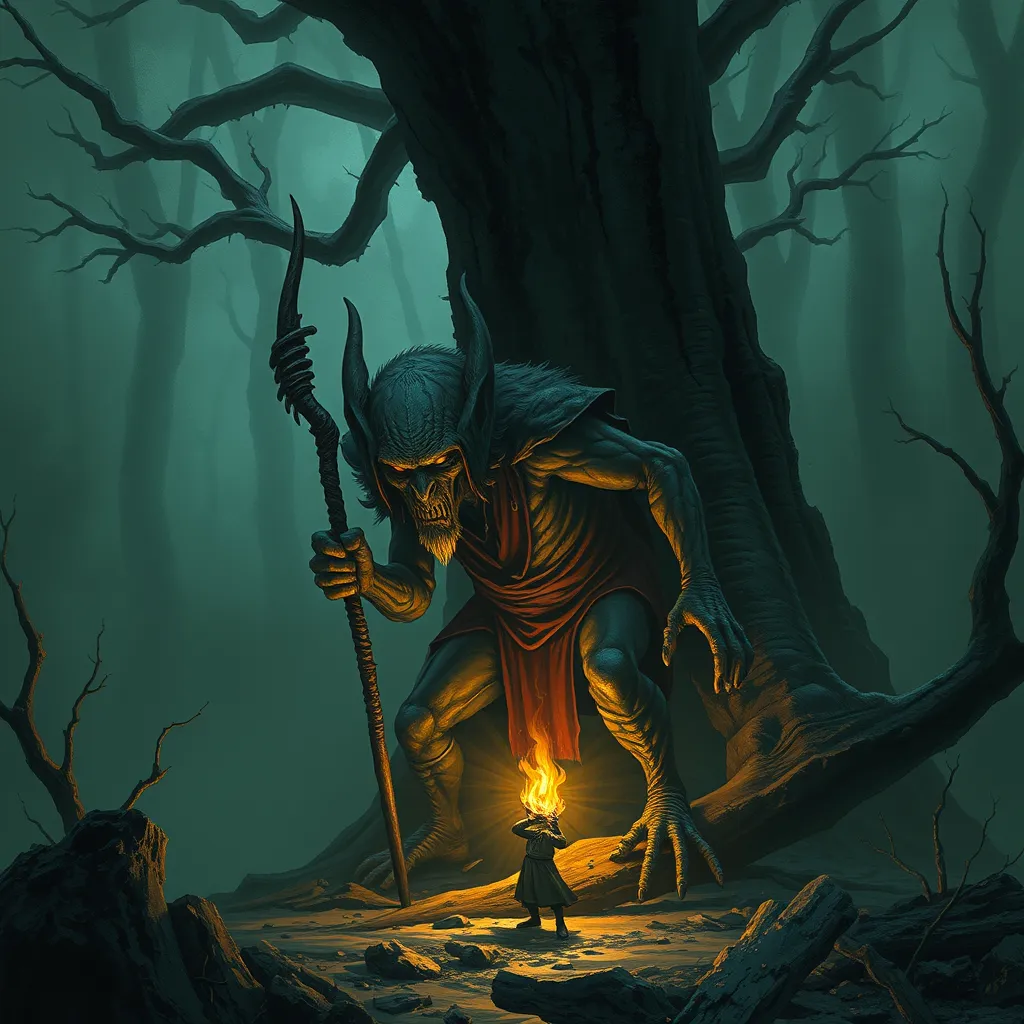The Fairy Faith of the European Folk: Traditional Beliefs and Practices
I. Introduction
The Fairy Faith refers to a collection of beliefs and practices centered around the existence and influence of fairies in the lives of people, particularly in European cultures. This faith encompasses a rich tapestry of folklore, rituals, and community values that have shaped the understanding of fairies and their role in human affairs.
Historically, the Fairy Faith has played a significant role in the cultural landscape of Europe. It reflects the relationship between humans and the supernatural, revealing how communities have interacted with invisible forces believed to govern their lives. This article will explore the origins, characteristics, traditional practices, and the modern evolution of the Fairy Faith, highlighting its enduring significance.
We will delve into the roots of fairy beliefs, examine the characteristics of fairies, discuss traditional rituals, and explore the landscapes considered sacred to fairies, while also considering the social impact of these beliefs and their evolution over time.
II. Origins of Fairy Beliefs
A. Early references in folklore and literature
Fairy beliefs can be traced back to ancient folklore and literature, with early references appearing in texts from various cultures. For example:
- In Celtic mythology, fairies are often depicted as powerful beings with the ability to influence human lives.
- Shakespeare’s “A Midsummer Night’s Dream” introduces characters like Puck and Oberon, showcasing the enchanting nature of fairies.
- Folklore collections from different European regions contain numerous tales of encounters with fairies, highlighting their significance in local narratives.
B. The influence of pre-Christian beliefs
Many fairy beliefs are rooted in pre-Christian traditions, where nature was imbued with spiritual significance. These beliefs often merged with later Christian traditions, leading to a complex interplay of ideas about morality, nature, and the supernatural. The transition from pagan rituals to Christian practices allowed for the adaptation of fairy lore, which often served as cautionary tales or moral lessons.
C. Regional variations in fairy lore across Europe
Fairy lore varies significantly across Europe, influenced by local customs, geography, and historical events. Some notable variations include:
- In Ireland, the Tuatha Dé Danann are considered a race of divine beings often associated with the fairy world.
- In Scotland, the “Seelie” and “Unseelie” courts represent the dual nature of fairies, with the former being benevolent and the latter malevolent.
- In Eastern Europe, tales of spirits and household fairies like Domovoi reflect a more domestic aspect of fairy beliefs.
III. Characteristics of Fairies
A. Common traits and descriptions of fairies
Fairies are often depicted as ethereal beings, possessing a variety of traits. Common descriptions include:
- Small stature, often with wings.
- Glowing or luminescent appearances.
- Ability to shape-shift into various forms.
B. Types of fairies and their roles in folklore
Different cultures have categorized fairies into various types, each serving specific roles in folklore:
- **Nature Spirits:** Connected to specific natural elements like rivers or trees.
- **Household Fairies:** Such as brownies or hobgoblins, believed to assist with domestic tasks.
- **Tricksters:** Fairies that enjoy playing pranks on humans, often teaching moral lessons through mischief.
C. The dual nature of fairies: benevolent vs. malevolent
Fairies embody a dual nature, often described as both benevolent and malevolent. While some fairies are believed to help humans, others can cause mischief or harm:
- **Benevolent Fairies:** Provide blessings, protection, and good fortune.
- **Malevolent Fairies:** Can lead humans astray, cause illness, or steal children.
IV. Traditional Practices and Rituals
A. Offerings and appeasements to fairies
To maintain good relationships with fairies, people often made offerings. These could include:
- Food and drink, especially on certain days or during festivals.
- Flowers and herbs, believed to please the fairies.
- Small gifts left at fairy mounds or crossroads.
B. Protective charms and talismans
Throughout Europe, people created charms and talismans to protect themselves from negative fairy influences. Common items included:
- Iron objects, believed to ward off malevolent fairies.
- Specific herbs, like St. John’s wort, known for their protective properties.
- Amulets with inscriptions or symbols for safety.
C. Seasonal festivals and their connections to fairy beliefs
Many seasonal festivals are tied to fairy beliefs, celebrating the changing of the seasons and honoring the fairy realm. Important festivals include:
- **Beltane:** Celebrating spring, often associated with fertility and fairy blessings.
- **Samhain:** The festival marking the end of harvest, believed to be a time when the veil between worlds is thin, allowing fairies to interact with humans.
V. Fairy Landscapes and Sacred Spaces
A. The significance of natural sites in fairy lore
Natural landscapes hold immense significance in fairy lore. The following sites are often considered sacred:
- **Hills and Mounds:** Believed to be entrances to the fairy realm.
- **Sacred Wells:** Associated with healing and blessings from fairies.
- **Groves and Forests:** Considered enchanted spaces where fairies dwell.
B. Sacred wells, hills, and groves
Sacred sites are often the focus of local pilgrimage and reverence. These sites include:
- **The Hill of Tara in Ireland:** A site of ancient kings and fairy lore.
- **The Well of St. Brigid:** A place of healing and offerings.
- **The Yew trees of churchyards:** Often associated with fairy connections and protection.
C. Modern-day pilgrimage and preservation of fairy sites
Today, many people engage in pilgrimages to these sacred sites, seeking connection with the fairy world. Efforts to preserve these sites have grown, as they represent cultural heritage and ongoing traditions.
VI. The Role of Fairy Faith in Community Life
A. Fairies as agents of social order and morality
Fairy beliefs often served as a means of enforcing social norms and morality within communities. Tales of fairies would convey lessons on:
- **Honesty:** Fairies rewarding or punishing behaviors based on truthfulness.
- **Respect for nature:** Encouraging harmony with the environment.
- **Community solidarity:** Emphasizing the importance of helping one another.
B. The impact of fairy beliefs on local customs and traditions
Fairy beliefs have influenced various customs, from agricultural practices to celebrations. They often intertwine with local traditions, creating a unique cultural identity.
C. Oral storytelling and its importance in passing down beliefs
Oral storytelling has been crucial in preserving fairy lore. Through tales passed down generations, communities maintain their connection to fairy beliefs, keeping the tradition alive.
VII. The Evolution of Fairy Faith in Modern Times
A. Changes in perception of fairies and folk beliefs
The perception of fairies has shifted over time, particularly with the rise of rationalism and modernization. Fairies are often seen as whimsical characters in children’s stories, losing some of their original cultural significance.
B. The resurgence of interest in paganism and folk traditions
In recent years, there has been a resurgence of interest in paganism and folk traditions, with many seeking to reconnect with their ancestral roots. This revival has led to a renewed appreciation for the Fairy Faith and its cultural implications.
C. Influence of popular culture on fairy mythology</



